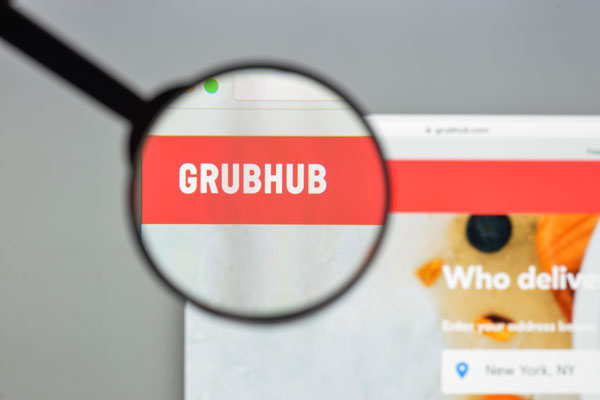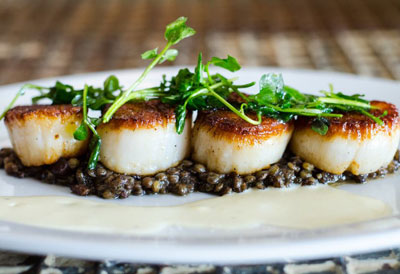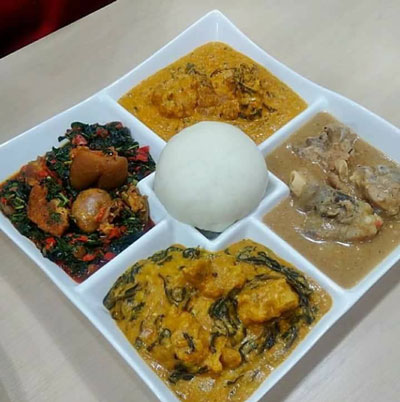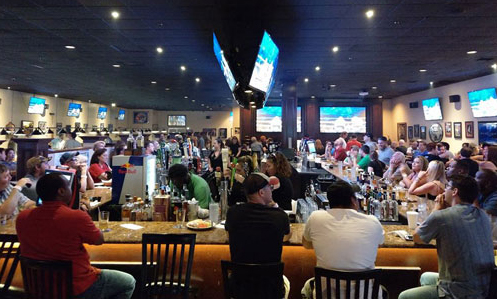ACityDiscount customers debate the expensive issue
Third-party food delivery is the future of the restaurant industry. So we’re told.
Companies like UberEats, Grubhub, DoorDash, Caviar, Postmates and dozens of others are experiencing huge growth – and fast. So much grow, in fact, that this $13 billion market is projected to grow at an annual rate of 13.5 percent (compared to overall food industry at three percent a year), according to Pentallect Inc., a food industry strategy firm.
Cowen and Co., an investment banking firm, estimates food delivery’s current value even higher at $43 billion, while estimating its growth at $76 billion by 2022.
Less than a decade after third-party delivery became a big deal for American consumers, allowing cuisine to reach work places, high-rise apartments and cookie-cutter townhomes with a few clicks of a smartphone, it appears success is all but secured.
Not yet.
Third-party delivery creates logistical challenges, branding issues and threatens to alter restaurant business plans due to back-end costs. These challenges may be fixable, but imagine trying to get America’s million-plus restaurants – from mom & pop eateries to mega-franchises – to sign-off on similar agreements.
It could be a financial headache. Or, it could mark a financial advantage in certain markets.

|
“Delivery is the hottest thing in the restaurant business right now -- but as many restaurants are finding, the trouble is keeping it cold. Or crisp, in the case of french fries. Or warm, in the case of pho.” – Washington Post |
If you’re a restaurant owner or operator considering third-party delivery, what do you do?
A: Follow the trend, for better or for worse.
B. Wait until competitors try it. That way, you protect your business from potential pitfalls; but risk falling behind the times (and profits).
C. Avoid third-part food delivery all together – bank on it failing. If it succeeds, it could be your business that fails.
(Before you answer, consider this: Two weeks after Chipotle launched its partnership with DoorDash in April 2018, the fast-casual chain announced delivery orders increased 667 percent. Through May 6, delivery fees were waived on Chipotle orders of $10 or more made through the DoorDash app.)
|
“While it’s hard to pass up the opportunity to give customers what they want, gain exposure among new customers and, most important, grow the top line without having to make a substantial investment in people and infrastructure, allowing a third party to book orders and deliver food also requires taking on a fair amount of risk.” – ChicagoBusiness.com |
We created a list of Pros and Cons list to help ACityDiscount customers make educated decisions about third-party delivery. (Yes, the cons outnumber the pros; that doesn’t mean each item has the same value.)
Pros
- Easy access to food: it’s what customers crave – at a growing rate.
- No need to expand size brick-and-mortar location to grow. No need to be concerned with flipping covers faster. Third-party delivery creates a “virtual” dining room which can impact sales by double digits.
- New restaurants can earn quick notoriety, a financial advantage against long-standing competitors.
Cons
- Delivery apps charge as much as 35 percent – dangerous numbers for eateries with razor-thin margins.
- Hospitality is out of your restaurant’s hands. Ambiance is no longer a part of the package. The same goes with customer service, as well as control of the cuisine – the state of the product when it is presented to customers (cold, soggy, half-melted, spilled). These are all elements of restaurant branding.
- If something goes wrong and it's not the restaurant's fault, it is the restaurant's fault, according to most consumers. A Technomic study found that when ordering through a third-party website, 76% of people surveyed held the restaurant partially responsible for mistakes. Meanwhile, negative restaurant reviews published on third-party delivery apps – mistakes that aren’t the fault of the restaurant (a driver handles cuisine improperly; a restaurant stops taking orders on a particular day; a price change is not reflected on app, etc.) – can damage the restaurant’s future business prospects.
- The delivery driver has no allegiance to any restaurant.
- Food safety: drivers may not ne ServSafe certified.
- An unexpected influx of orders could slow down the kitchen for in-house diners.
- In general, restaurants that utilize third-party services do not own customer information. The service typically charges restaurants for the information about their own customers.
- Restaurants are unable to upsell customers (drinks, desserts), which represent a significant amount of post revenue.

What ACityDiscount Customers Are Saying
“We want people to come in and sit down… I don’t like the whole premise of someone delivering food that’s not an employee. If we were to do it, I wouldn’t even want our staff to do it because of the liability; the car insurance and cost of covering them is really expensive. I don’t know how other businesses do it.”
Matthew Murphy, Partner/Chef
Three Blind Mice
1066 Killian Hill Rd SW #101, Lilburn, GA
Web site: tbmrestaurant.com

"We’ve been doing (UberEats) for six months. There are two ways I look at it. First of all, it’s ruined our (online) reviews. Our reviews were really good. But we’ve had four bad reviews relating to (errors by) UberEats that dropped us from a 4.8 (out of five) to 4.6.
"On the other hand, we have a lot of customers that want delivery. So that’s an option that we can give our customers: tell them to log in to UberEats and order... Initially, when we started, it was five percent of our sales. Now it’s gone up to 20 percent. And I believe in about two, three years, the way things are going, it’s probably going to account for 50 percent of our sales.... UberEats has the manpower to be able to get a driver (to my restaurant) in three, four minutes. A smaller company cannot do that."
Ade Faderin, President
FAD Fine Dining Restaurant & Banquet Hall
3565 Austell Road, Ste 30-31, Marietta, GA 30008
Facebook Page

“We’re not doing third-party delivery. We’ve been contacted by numerous companies. To me, the value’s not there. A third-party company is going to want a part of your sale, typically 30 percent or more. For restaurants, that’s their profit margin.
“You get some advertising out there, maybe opening up to a group of people that don’t eat out. But as a restaurant owner, I want people to come in and dine with me so they can buy alcohol, buy soft drinks, stuff that’s going to increase my profitability.”
Dan Moss, General Manager
Mazzy’s Sports Bar & Grill
Website:mazzys.com
Four locations in Greater Atlanta area: Roswell, Marietta, Norcross, Kennesaw
Solutions
- Go with third-party: Create menu items with lots of profit margin, allowing for better transition to the expensive cost of partnering with third-party delivery services.
- Hire web developers to create online ordering portals on your restaurant web site, and contract local company to handle deliveries.
In 2018, restaurants need to pick one of the two solutions to stay competitive in an ultra-competitive industry:


